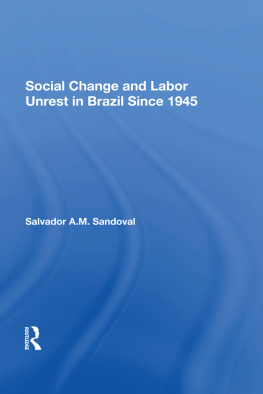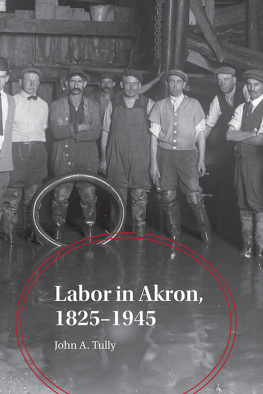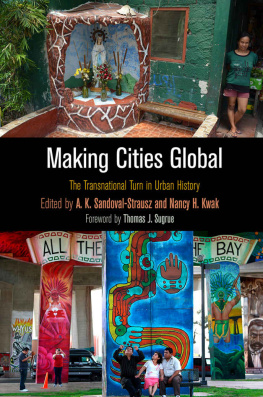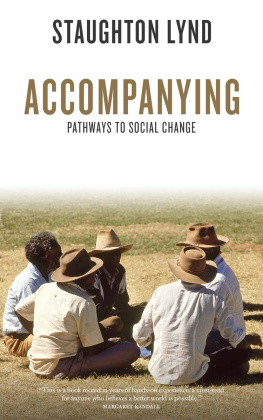First published 1993 by Westview Press, Inc.
Published 2019 by Routledge
52 Vanderbilt Avenue, New York, NY 10017
2 Park Square, Milton Park, Abingdon, Oxon OX14 4RN
Routledge is an imprint of the Taylor & Francis Group, an informa business
Copyright 1993 Taylor & Francis
All rights reserved. No part of this book may be reprinted or reproduced or utilised in any form or by any electronic, mechanical, or other means, now known or hereafter invented, including photocopying and recording, or in any information storage or retrieval system, without permission in writing from the publishers.
Notice:
Product or corporate names may be trademarks or registered trademarks, and are used only for identification and explanation without intent to infringe.
Library of Congress Cataloging-in-Publication Data
Sandoval, Salvador A.M.
Social change and labor unrest in Brad since 1915 / Salvador
A.M. Sandoval.
p. cm.
Includes bibliographical references (p. ) and index.
1. Strikes and lockoutsBrazilHistory20th century.
2. Irtdustrial relationsBrazilHistory20th century.I. Title
HD5353.526 1993
331.892981 09045dc20
93-1 6955
CIP
ISBN 13: 978-0-367-28748-1 (hbk)
Beleaguered Brazil has known many political regimes since 1945, some more democratic than others. In his vigorous vindication of social sciences contribution to political understanding, Salvador Sandoval shows us that changes of regime over the 45 years in question strongly affected the character of Brazilian industrial conflict. He uses a variety of sources, including his own meticulous, voluminous compilations from newspaper reports, to document change and variation in strike waves, general strikes, mass strikes, firm-by-firm strikes, and the voicing of different kinds of demands. He demonstrates that in Brazil repressive regimes muted the relationship between economic fluctuations and strike activity, whereas under more permissive regimes fluctuations in such factors as real wages had stronger effects on the rise and fall of industrial conflict. Ironically, a regimes attempt to depoliticize strikes and workers by repressing unions and working-class leaders increased the responsiveness of industrial conflict to political conditions.
Another irony: Successive regimes own promotion of economic expansion recurrently generated changes in the Brazilian labor force and industrial organization that undermined repressive strategies. The encouragement of capital-intensive industry formed whole new groups of workers while authoritarian governments were concentrating their fire at the older, smaller-scale sites of production, which had earlier served as bases for radicals. The creation of large state sectors in manufacturing and services eventually facilitated massive strikes against the state. The liberal dismantling of the old paternalist arrangements under which governmental taxes paid established unions freed union organizers to act on their own against the government.
This last point catches the eye. In a day when the share of North American unions income from dues is declining while their reliance on government-regulated pension and welfare funds is rising, Sandovas analysis opens the way to a neglected comparative study (comparable to the fiscal sociology that has flourished in studies of the state) of how the source and form of union revenues affect labor militancy. Although he concentrates on the decay of corporatist institutions, Sandovas treatment opens the path to a much wider set of comparisons.
Although a few scholars have carried on parallel studies of North America and Western Europe, Salvador Sandoval serves comparative analysis well by his rigorous treatment of a great Latin American industrial power. Not only does he give us a lucid chronicle of Brazilian political and economic history since World War II but he also puts his observations of industrial conflict in a form that lends itself readily to comparison in both directions: with national histories that have already been analyzed in the same perspective and with similar studies of other Latin American (or, for that matter, Asian) countries that have yet to be done, that need urgently to be done. Sandoval has shown the way.
Social Change and Labor Unrest in Brazil also raises questions about democracy. Democracy is intensively, inevitably, and even desirably a contested term - nowhere more so than in Latin America today. (Are Brazil, Paraguay, Colombia, Cuba, Peru, El Salvador, Mexico, Argentina, and Chile now democracies? In what senses of the term?) Yet one can draw from the diversity of definitions three widely-recognized elements. A state is democratic in so far as it guarantees:
- a broad, equal definition of citizenship;
- binding consultation of citizens with respect to state personnel and policies;
- protection of citizens, especially members of minorities, from arbitrary state action.
Thus a state democratizes if (among other things) it broadens and equalizes the franchise; if elections sweep out old powerholders and policies in favor of new ones; or if it checks the political autonomy of the army, the police, and other armed forces. By these criteria, the regimes Sandoval identifies as more repressive were also less democratic.
By extension, then, Sandovas study of Brazil illuminates one of the paradoxes and pleasures of democracy: The establishment of democratic rights frees citizens to pursue their own non-political interests by politicalor at least politically protectedmeans. The rights to unionize, to strike, to meet, to demonstrate, and to publish complaints or demands all increase the likelihood that workers will respond collectively and vigorously to short-run changes in their wages and working conditions while turning away from direct attempts to seize political powernot that workers and their leaders who turn to questions of wages and working conditions necessarily lose political awareness and will. On the whole, they remain sensitive to questions of rights, obligations, and justice. But so long as democratic institutions are operating reasonably well, workers can join other interests in seeking to use their collective strength with respect to capitalists and the state on behalf of their own material welfare. Social Change and Labor Unrest in Brazil also argues implicitly but effectively that infringements of democracy regularly promote politicization of industrial conflict. The book thereby allows us to observe the struggles of Latin American laborand, by extension, of labor throughout the worldwith eyes refreshed.
Charles Tilly
New School of Social Research
This study describes the patterns of strike activity in Brazil over a period of forty-five years from the end of the Second World War to 1989. Brazilian strikes have changed substantially over these years in form, frequency, and content. Our task in this book is to explain these changes through an analysis of their quantitative dimensions.
Trends in the characteristics of strike activity can be used to assess interpretations about modifications in the nature of worker protest, even though strikes are not the only indicators of protest in a society. Nonetheless, strikes can be seen as a distinct form of contention involving the collective refusal to work. As such, they represent a situation of overt conflict between workers, employers and the state. Thus, they can be distinguished, to a greater or lesser extent, from other forms of popular protest. The purpose of focusing on the strike is to see how often it is used, under what circumstances it is employed, by which workers, and with what effects.









